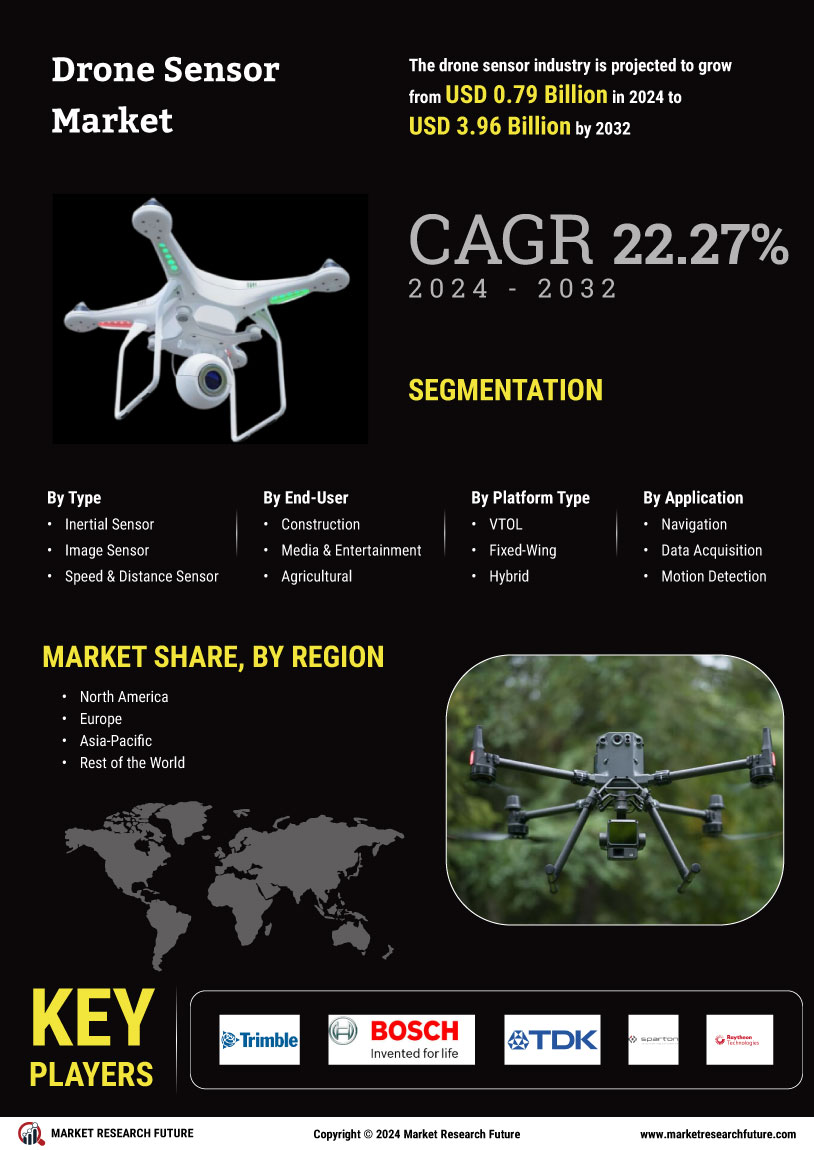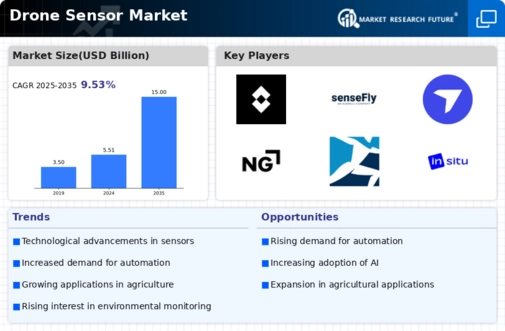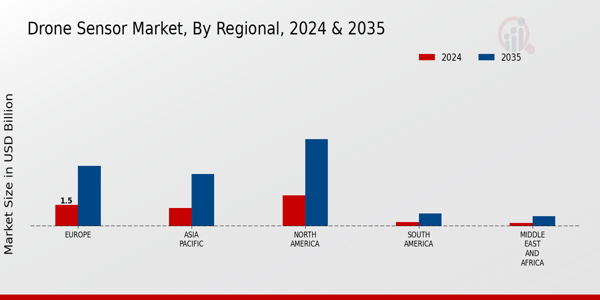Market Growth Projections
The Global Drone Sensor Market Industry is poised for substantial growth, with projections indicating a market value of 5.51 USD Billion in 2024 and an anticipated rise to 15 USD Billion by 2035. This growth reflects a compound annual growth rate of 9.53% from 2025 to 2035, driven by advancements in technology and increasing adoption across various sectors. The market is likely to expand as industries recognize the potential of drone sensors for enhancing operational efficiency and data collection capabilities. As a result, stakeholders are expected to invest significantly in research and development to innovate and improve drone sensor technologies.
Technological Advancements
The Global Drone Sensor Market Industry is propelled by rapid technological advancements in sensor technologies. Innovations such as LiDAR, multispectral, and thermal imaging sensors enhance the capabilities of drones, enabling them to perform complex tasks across various sectors. For instance, LiDAR sensors are increasingly utilized in agriculture for precision farming, allowing farmers to monitor crop health and optimize resource usage. The integration of artificial intelligence with drone sensors further augments data analysis, leading to improved decision-making. As a result, the market is projected to reach 5.51 USD Billion in 2024, reflecting the growing demand for sophisticated drone applications.
Increased Adoption in Agriculture
The Global Drone Sensor Market Industry experiences significant growth due to the increased adoption of drones in agriculture. Farmers leverage drone sensors for crop monitoring, soil analysis, and pest detection, which enhances productivity and reduces operational costs. For example, drones equipped with multispectral sensors can assess crop health by capturing data on vegetation indices. This technology allows for timely interventions, ultimately improving yield. The agricultural sector's reliance on drone technology is expected to contribute to the market's expansion, with projections indicating a rise to 15 USD Billion by 2035, driven by the need for efficient farming practices.
Government Initiatives and Regulations
Government initiatives and regulations play a crucial role in shaping the Global Drone Sensor Market Industry. Many countries are implementing policies to promote the use of drones for various applications, including surveillance, disaster management, and infrastructure inspection. For instance, regulatory frameworks are being established to ensure safe drone operations, which encourages investment in drone technology. Additionally, government funding for research and development in drone sensors fosters innovation. These supportive measures are likely to enhance market growth, with a compound annual growth rate of 9.53% anticipated from 2025 to 2035, as more sectors adopt drone solutions.
Growing Demand for Surveillance and Security
The Global Drone Sensor Market Industry is significantly influenced by the growing demand for surveillance and security applications. Drones equipped with advanced sensors are increasingly deployed for monitoring critical infrastructure, border security, and public safety. For example, law enforcement agencies utilize drones with thermal imaging sensors for search and rescue operations, enhancing situational awareness. The rising concerns over security threats and the need for efficient monitoring solutions are driving investments in drone technology. This trend is expected to contribute to the market's growth trajectory, reinforcing the importance of drone sensors in enhancing security measures.
Emerging Applications in Infrastructure Inspection
Emerging applications in infrastructure inspection are driving the Global Drone Sensor Market Industry forward. Drones equipped with high-resolution cameras and specialized sensors are utilized for inspecting bridges, power lines, and pipelines, enabling efficient and safe assessments. For instance, utility companies employ drones to monitor power lines, reducing the need for manual inspections that can be hazardous. This application not only enhances safety but also improves operational efficiency. As industries increasingly recognize the benefits of drone technology for infrastructure maintenance, the market is poised for growth, with a projected increase to 15 USD Billion by 2035.





















Leave a Comment